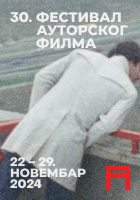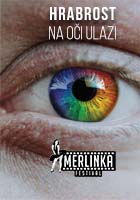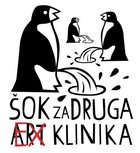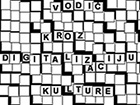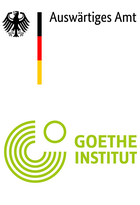
Lični oglasi
Izložba „Lični oglasi“ ima za cilj preispitivanje i poigravanje fenomenom samooglašavanja osoba koje šalju svoje fotografije časopisima ili ih postavljaju na internet sajtove, nadajući se da će pronaći partnera po meri. Savremena tehnologija obezbeđuje utoljenje enormne ljudske gladi za biranjem i klasifikovanjem, što pasiviziranom pripadniku potrošačke kulture štedi vreme i novac u zadovoljavanju i bazičnih fizioloških potreba. Međutim, malo je onih koji odmah „prelaze na stvar“, pa se stoga u ličnim oglasima kao omiljena lozinka javlja tzv. kategorija „druženje“. Iza nje se najčešće krije želja za intimnim odnosima, koja se, iz određenih razloga, u svakodnevnoj komunikaciji čini teže ostvarivom. Za početak je dovoljna jedna fotografija – ona „prava“, najreprezentativnija, bilo da je snimljena specijalno za tu priliku ili je birana iz albuma sa nekog putovanja ili proslave. Konačno, svakome se pruža šansa da se predstavi u „idealnom svetlu“, onako kako je Bart to opisao govoreći o drugom od četiri aspekta portretne fotografije: „kako želim da me drugi vide“. Savremene teorije o prezentaciji sopstva sugerišu da je prostor ličnog oglašavanja u tom smislu najfleksibilniji i najmanje represivan. Likovi na izloženim fotografijama su kostimirani neprofesionalni glumci koji svojim uigravanjem i mimikrijom predstavljaju zamišljene pretendente na „sreću u ljubavi“, pozirajući kao kada bi se slikali za lični oglas. Uz dozu humora, oni simbolizuju različite stupnjeve svesti o sebi, privlačnosti i seksualnosti. Ona „prava“ fotografija ukazuje na to da se čitav proces samooglašavanja zasniva najpre na vizuelnom utisku. Namerno karikirani, portreti ovih ljudi ne predstavljaju njih same, već su proizvod fotografske fikcije, koja kao takva omogućuje udaljavanje, često neophodnu distancu da bi se neki fenomen, paradoksalno, sagledao „iz blizine“. Oglasi „lične prirode“ ne ostaju u zatvorenom krugu, intimnom utočištu ili svetu mašte svojih protagonista, već zakoračuju u društveno-ekonomsku orbitu u kojoj se odvija trgovina tipovima u mnoštvu ljudskog inventara. Dok na fotografijama svi (po pravilu) izgledaju potpuno zadovoljni i ponosni na ono što jesu, iz njih se probijaju privatni lomovi i ekscesi. Stoga je teško reći da li se radi o još jednom nusproizvodu već iznurenog potrošačkog društva ili o konačnom dostizanju panaceje za sve vrste ličnih patnji.
Katarina Radović
Personals (2004-2006)
The exhibition entitled “Personals” aims at investigating and playing with the phenomenon of self-advertisement – those people who send images of themselves to magazines or Internet sites, in the hope of finding a suitable partner. Modern technology facilitates the satisfaction of the enormous human appetite for classification and selection, saving an average passive member of consumer society both time and money in meeting even the most basic physiological needs. However, not many of self-advertisers like to “get straight to the point”. For that reason, the favourite password in the world of personal ads is “friendship”. It covers the desire for more intimate relationships, in the case of those whose longing is repressed in daily communication on account of psychological or social obstacles. It seems enough for a start to have a photograph, the “right” and the most representative one, whether it was taken especially for the occasion or chosen among some long discarded family or holiday snaps. Now, every one is given a chance to be represented in the “ideal light”, at least in this artificial space of collective privacy. The characters in these photographs are unprofessional actors who, by posing as if they are being photographed for their own personal ads, impersonate aspirants to “happiness in love”. With a touch of humour, they symbolize various degrees of self-awareness, attractiveness and sexuality. The “right” photograph points to the fact that the whole process of self-advertising is based primarily on visual appeal – the exchange of looks is the necessary overture to anything that might succeed. Deliberate parodies, the portraits of these people do not represent themselves; they are the result of the photographic fiction – fiction that creates a critical distance in order that, paradoxically, certain phenomena may be more accurately perceived. “Personals” do not linger in the intimate circle of their protagonists or their imaginative world. They step out into the socio-economic orbit, where the trade of “types“ from the human inventory takes place. While the characters in these photographs give the impression of being content and proud of who they are, their private traumas and excesses do not escape exposure. It is therefore hard to tell whether this phenomenon is the panacea for all sorts of personal sufferings, or just another by-product of an already exhausted consumer society.
Katarina Radovic


